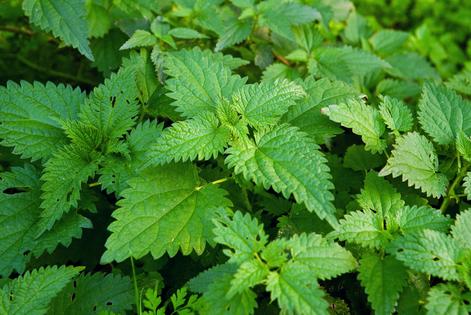THE KITCHN: 9 spring weeds you can eat
Many of us look forward to the arrival of spring farmers' markets, but there's another source of beautiful, seasonal greens: your own yard or local park! Plants such as dandelions, chickweed and wood sorrel are often dismissed as weeds, yet in many cases they are even more nutritious than cultivated produce -- and quite delicious, too.
If you go foraging, be sure you know how to positively identify any wild plant before harvesting it. ("Foraging and Feasting" by Dina Falconi is a great resource for learning how to identify and cook with foraged foods.) Avoid picking in areas that may be contaminated with pesticides, lead, dog pee or roadside runoff. In many places these plants are abundant and/or invasive and you don't need to worry about over-harvesting, but always think about your local ecosystem and forage in a respectful manner.
Here are nine wild plants to keep an eye out for this spring:
--Chickweed (Stellaria media)
This delicate plant often grows in sprawling mats and has a mild green flavor. It wilts quickly, so eat the tender leaves, stems and flowers as soon as possible after picking. Chickweed contains calcium and vitamin C and is best served raw in dishes that highlight its freshness, such as salads, sandwiches, juices and pesto.
--Curly dock or yellow dock (Rumex crispus)
Harvest the tender, somewhat sour young leaves before they get tough. High in vitamin C, iron and calcium, they may be eaten raw in salads or steamed, boiled or sautéed like other leafy greens. (Note: Eat in moderation if you are sensitive to oxalic acid.)
--Dandelion (Taraxacum officinale)
Highly nutritious dandelion leaves may be eaten raw or cooked, much like you would use greens like kale or chard. Young greens are less bitter and sharp tasting than more mature leaves; however, bitterness is actually beneficial for the digestive system. To tame the bitterness, add fat like oil, bacon, butter or nuts. The bittersweet flowers may be eaten in salads or compound butters, or turned into jelly and wine.
--Mallow (Malva neglecta, M. parviflora)
This mild flavored plant has a mucilaginous quality a bit like okra. Eat the tender leaves raw in salads and smoothies or steamed, boiled or sautéed like spinach. The leaves may also be used in a soothing tea for dry sore throats and coughs. The flowers make a pretty, edible garnish.
--Miner's lettuce (Claytonia perfoliata)
So named because it helped prevent miners from getting scurvy, this vitamin C-packed green is mild, succulent and unusually pretty. Miner's lettuce is best enjoyed fresh, whether you nibble it on the spot or eat it in a salad (go light on the dressing) or sandwich.
--Mustard (Brassica spp., particularly B. rapa, B. nigra)
Wild mustard greens are nutritious and spicy and can be cooked just like cultivated mustard greens and other leafy greens. Young leaves have a better texture and milder, less bitter flavor. The flowers are also pleasantly spicy and make a good garnish.
--Stinging nettle (Urtica dioica)
Nettles may be intimidating, but they are well worth the effort. Harvest nettles before they flower and use gloves, scissors and/or tongs to avoid touching them directly. Then cook or pulverize them to remove the sting. This flavor-packed green evokes spinach, cucumber, mint and parsley, and is rich in vitamins and minerals.
--Violet (Viola spp., particularly V. sororia, V. papilionacea)
Violets have a mild flavor and are rich in vitamin C. The flowers make a beautiful garnish for salads and desserts, where they may be used raw or candied. The tender new leaves may be eaten raw or cooked like spinach. Be aware that yellow violets may have laxative properties.
--Wood sorrel (Oxalis stricta)
Wood sorrel's heart-shaped leaflets and flowers are high in vitamin C and have a refreshing sour taste. They are best enjoyed raw in salads, compound butters, juices and as garnishes. The juice can also be used to make lemony sauces and dressings. (Note: Eat in moderation if you are sensitive to oxalic acid.)
(Emily Ho is a writer for TheKitchn.com, a nationally known blog for people who love food and home cooking. Submit any comments or questions to kitchn@apartmenttherapy.com.)











Comments